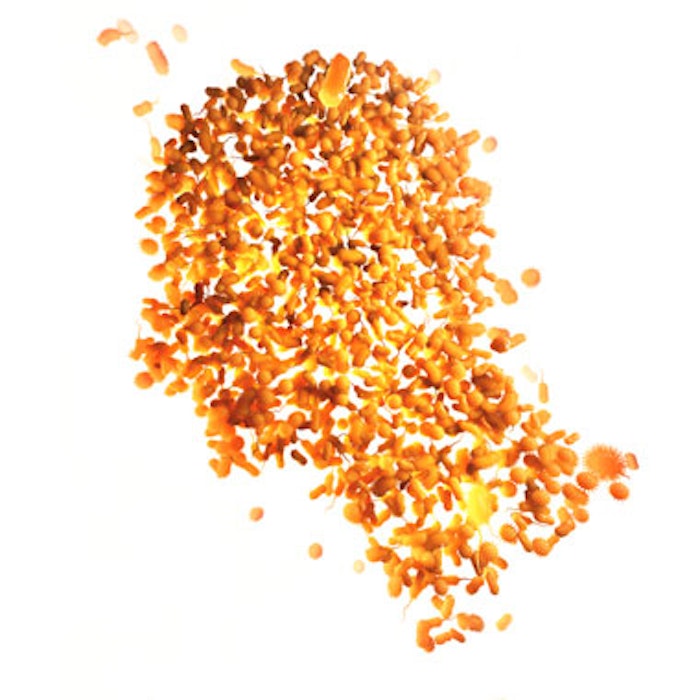
New products that promise to “unlock a more youthful appearance,” “turn back the hands of time,” and “reset the aging process” bombard consumers and skincare professionals on a seemingly daily basis. While we know that topical skincare is vital to skin health, the question is, do these new ingredients deserve a space on your retail shelves?
“The jury is still out on a lot of these new actives,” says Michael Gold, MD, founder of Gold Skin Care in Nashville. “Most people are offering them as a ‘try this; it’s new’ or using them in combination with retinoids. We need more clinical data and we have to see how they perform over time.”
We spoke with chemists and physicians and asked them to share their thoughts on which new topical ingredients show the greatest promise of living up to their hype.
Next-Generation Retinoids
Retinoids (tretinoin or retinoic acid or non-prescription retinol) remain the gold standard in antiaging skin care. “If we are talking about the prevention of skin aging, sunscreen remains absolutely essential,” says John Kulesza, PhD, chemist and founder of Young Pharmaceuticals. “When it comes to treatment, retinoids are the No. 1 class of ingredients that are proven to make people look younger.”
These vitamin A-derivatives have a long history in dermatology and are the only drugs approved by the U.S. FDA to treat skin aging.
New retinoid esters being used in cosmetic formulations may offer the antiaging benefit of retinoids without the downsides of skin irritation and inflammation. “They are very interesting and may be superior to [non-prescription] retinol,” Kulesza says.
Retinoid esters—which include hydroxypinacolone retinoate, ethyl lactyl retinoate and glycerol retinate—are created by reacting fatty alcohols with retinoic acid. “They are used in several cosmetic products and represent a new generation of retinoids that appear to work and may be more gentle than some of the older retinoids,” says Kulesza.
The theory is that while these retinoid esters are recognized by receptors in the fibroblasts, melanocytes and keratinocytes—similar to retinoic acid and retinols—they are not well recognized by receptors in skin cells that mediate inflammation. “And that is the goal: to find compounds that do the good things, such as stimulating collagen production and regulating pigmentation, but don’t do as much of the bad things, such as causing redness and inflammation,” says Kulesza.
Defensins
Peptides have become key ingredients in antiaging skincare, where they are used to signal a number of skin-repair mechanisms. One group of peptides, defensins—which play a key role in wound healing—has generated a great deal of interest among dermatologists and skincare professionals.
A new company, DefenAge, has developed a proprietary peptide complex called Age-Repair Defensins. “It includes naturally occurring peptides that stimulate the LGR6+ stem cells in the hair follicle to make new keratinocytes,” says Leslie Baumann, dermatologist, author of Cosmeceuticals and Cosmetic Ingredients and CEO of Skin Type Solutions. “The defensins are packaged in a molecule that helps them penetrate into the hair follicle where they stimulate the patient’s native LGR6+ stem cells.”
“This is an interesting product,” says Michael Gold, MD, founder of Gold Skin Care in Nashville. “The actives are alpha-1 and beta-2 defensins, which are a component of some of the things skin loses as we age. The company just presented a placebo-controlled study that showed some really nice results.”
The results of the multi-center, placebo-controlled study—presented at Vegas Cosmetic Surgery in June 2017—revealed that the treatment group had increased epidermis thickness, a greater number of proliferating cells, smaller pores, and fewer superficial wrinkles and deep wrinkles following six weeks of DefenAge use. The findings were based on histology, high-resolution skin ultrasound and clinical photography, as well as three-dimensional skin imaging and skin scores.
Growth Factors
Much remains unknown about the efficacy of growth factors—or even which ones offer the most aid to aging skin. “We really don’t know which growth factors support skin health,” says Dr. Baumann.
Still, growth factors have become ubiquitous in antiaging skin care. “Epidermal growth factor and transforming growth factor beta are some of the best known, but some products have 50 different growth factors, each of which plays a role in skin health, and that’s why they’re so popular right now,” says Dr. Gold. “If you can deliver the actives into the skin, [it is believed] these growth factors will find their places in the epidermis and stimulate a host of responses important for aging skin.”
Growth factor-based products and lines include Skinmedica’s TNS Serum, Neocutis’s Bio-Restorative Cream, Histogen’s Regenica Line, and Biopelle’s Tensage line. “Skinmedica and Neocutis have led the way with lots of clinical studies,” says Dr. Gold. “I also think Aivita’s PROVOQUE skincare line is exciting. The founders are part of UC Irvine and spend 99% of their time developing patient-specific immunotherapy treatments for cancer, specifically ovarian cancer. They took the same human-derived stem cell analogs that they use in their ovarian cancer research and put them into an antiaging product. Zoe Draelos, MD, and Mary Lupo, MD, did a very nice study for them, and all proceeds from the sales of the skincare line go to cancer research. We need to see more data, but the product contains a lot of growth factors because it is using human-derived stem cells.”
The study by Zoe Draelos, MD, et al—published in the Journal of Drugs in Dermatology (May 2016)—revealed that the stem cell-derived skin lineage precursor secretions, which are the active ingredients in the PROVOQUE line, feature “a high concentration of alpha 2-HS glycoprotein (fetuin) along with a multitude of protein factors involved in the development and maintenance of healthy human skin.”
Following 12 weeks of use, biopsies revealed “a significant amelioration of the clinical signs of intrinsic and extrinsic skin aging, findings that were confirmed by significant changes in skin morphology, filaggrin, aquaporin 3, and collagen I content,” the authors wrote.
Heparan Sulfate
Heparan sulfate—an essential glycosaminoglycan in skin health—has been studied for decades. “Understanding how heparan sulfate controls how cells in the dermis function has been a long-term research interest in my laboratory,” says Richard L. Gallo, MD, PhD, head of the Gallo Lab at the University of California, San Diego School of Medicine. “We believe that because heparan sulfate is a co-factor for many other enzymes and growth factors in the skin, it essentially serves as good fertilizer that helps everything in the dermis work better.”
“Heparan sulfate has been called the ‘master molecule,’ because it helps every part of our skin,” says Dr. Gold. “But the heparan sulfate molecule is too large to penetrate the stratum corneum, so we were not able to create a product [incorporating it].”
This changed when a skincare startup Sente developed a heparan sulfate analog that it believed could deliver the active into the dermis. They approached Dr. Gallo for testing. “The molecule has a very unique shape—it’s linear, almost like a needle—and it does in fact penetrate the epidermis, dermis and basement membrane,” says Dr. Gallo. “We believe its penetration capacity has more do with its shape than with its size.”
An eight-week study of Sente cream involving 15 patients, published in the July 2015 Journal of Drugs in Dermatology, showed improvement in skin hydration, firmness, elasticity, barrier function, and global fine lines and wrinkles.
“I was quite amazed at how beneficial a topical application of heparan sulfate can be in skin damage repair and remodeling,” says Dr. Gallo.
Microbiome-Derived Probiotics
Topical probiotics, an area of emerging research and product development, have been generating a lot of excitement and anticipation. Research has been primarily geared toward examining the role of skin microbiomes in wound healing and disease, but research has also revealed uses for skin aging.
“We’re finding a lot of basic biological mechanisms that are advancing our understanding of how the bacteria that live on the skin affect the way it behaves,” says Dr. Gallo. “And this includes bacteria that change the way the skin turns over, moisturizes itself, resists UV damage, changes pigmentation and becomes inflamed, as well as bacteria that make skin more susceptible to infection. All of these things have very important cosmetic applications.”
The bacteria that we lose as we age—and appear to be important to skin aging and health—belong to the staphylococcus (CoNS) species. “But that in itself is not enough information,” says Dr. Gallo. “It turns out there are very specific genes that convey these functions.”
The use of topically applied probiotics containing these species has led to dramatic results in patients with diseased skin, including those with poor wound healing and atopic dermatitis. “Clinical data show a dramatic infection-fighting effect within one day of restoring the balance of bacteria on the skin,” says Dr. Gallo. “How long those bacteria will last probably depends on the individual patient, and we’re still learning about that.” (The data was published in Science Translational Medicine, February 2017).
CoNS-based topicals are not yet commercially available, but Dr. Gallo believes they may reach the market within a year. “First, we’re going for disease treatment,” he says. “But there are obvious applications for normal skin with limitations from aging and photodamage that can be immediately translated.”
With so many new classes of ingredients coming onto the market each year, will retinoids soon have some competition? “There is interesting science, but a lot more work needs to be done to prove these things work,” says Kulesza. “At the end of the day, the gold standard remains retinoids. So when we evaluate a new ingredient, we need to see comparative studies between that ingredient and a retinoid.”
Inga Hansen is the executive editor of MedEsthetics.
Image copyright Getty Images











